Who said food plants don’t look good in the ornamental garden?
Edible landscaping, aka foodscaping, is finally having its day in the sun – adding food crops to the ornamental landscape. This doesn’t mean converting everything to a vegetable garden. It’s about fitting vegetable, fruit, and other edible plants into the landscape around the yard to add beauty – and to grow tasty food to snack on. Some vegetables and fruits can really shine in the ornamental garden and fit in well in a mixed border.
Read more: How to Create an Edible Landscape and 5 Reasons Why You Should
Brie Arthur, an expert in foodscaping, had a restrictive HOA that wouldn’t allow her to grow a vegetable garden. So she took the stealth approach – sprinkling vegetable seeds between her existing landscape plants, growing rice and calling it ornamental grass (which, technically, it is), and adding dwarf tomato and pepper plants as “ornamentals.” She had a good harvest from her work, and she even won a “Yard of the Year” award from the HOA. Crime does pay!
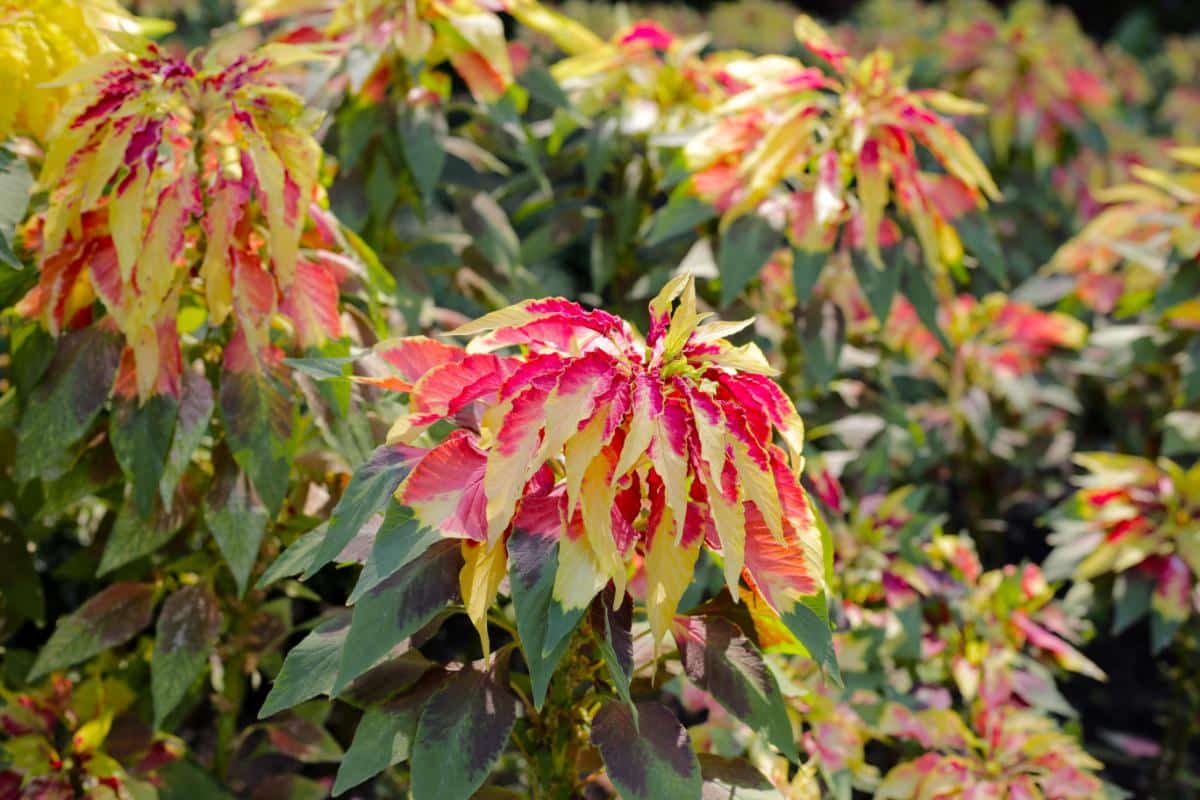
Read on to learn how to create your own edible landscaping, along with an extensive list of vegetable and fruit plants that would look great in an ornamental border (and provide tasty snacks).
Jump to:
- A Few Rules-of-Thumb for Edible Landscaping
- Gorgeous Vegetables and Fruits that Look Great in Edible Landscapes
- Leafy Vegetables
- Kale
- Red Orach
- Cabbages
- Swiss Chard
- Lettuces
- Other Leafy Vegetables
- Ornamental Grains
- Amaranth
- Buckwheat
- Ornamental Vegetables and Fruits
- Peppers
- Rhubarb
- Strawberries
- Tomatoes
- This Doesn’t Even Scratch the Surface!
A Few Rules-of-Thumb for Edible Landscaping
Naturally, these aren’t hard-and-fast rules. If you prefer to do your own thing, that’s perfectly fine, and nobody’s going to call the gardening police.
1. Low-Maintenance Plants Are Your Friends
First of all, a garden design—and this applies to regular gardens as well as edible gardens—should be low-maintenance. Most folks work a full-time job (and often a second job) and are raising children, so low-maintenance plants are a necessity. Fortunately, many vegetables and fruits fall into this category.
If you’re daunted by the idea of transforming a whole landscape, then start small. Start with one corner, add food plants, and see how it goes.
2. Plant Edible Plants in Moderation
Not every plant in your landscape has to be edible. Start out by tucking edible plants into your existing landscape and see where they work best. Tuck some pepper plants among the yellow cockscombs. Plant purple pole beans around a lamppost and train them up. Just be sure to add enough space around them in the garden bed, so you pick the harvest they offer.
After a while, you’ll start to see what companions work best with edible plants and what conditions make them happiest.
3. Choose Dwarf or Compact Varieties
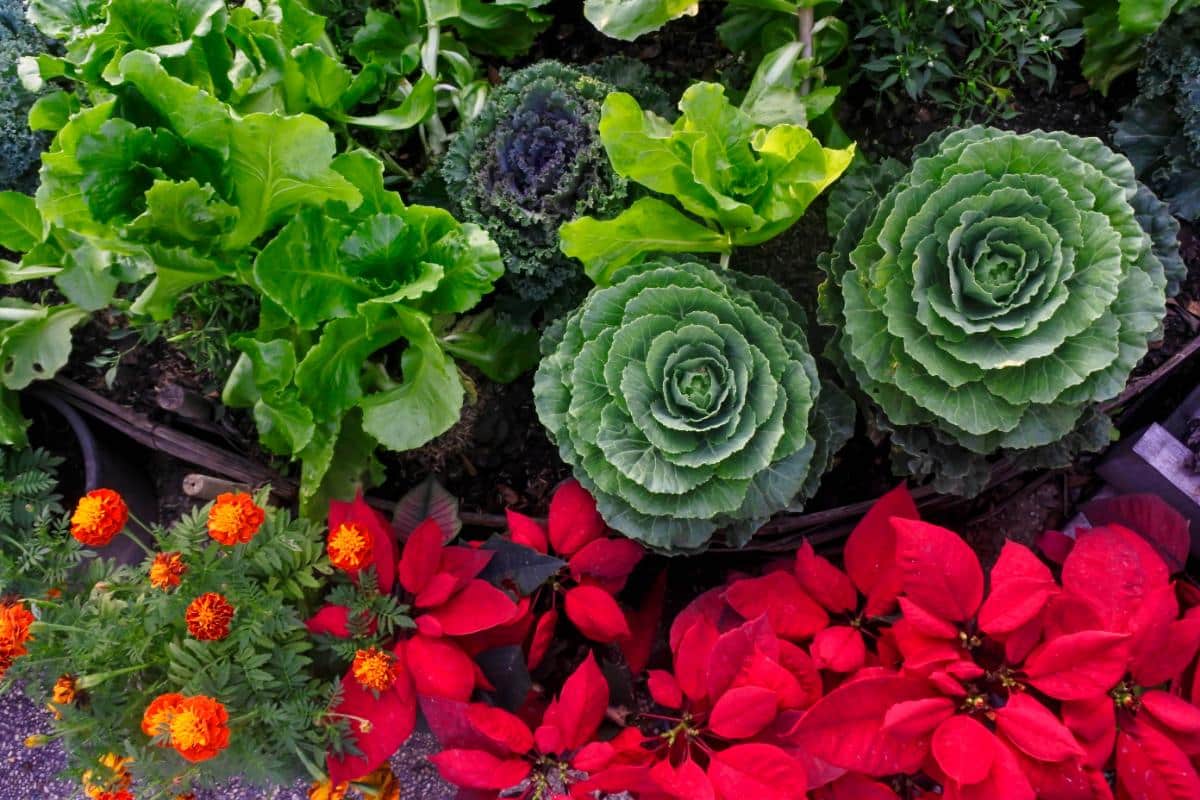
A plant always starts out looking so little and cute when you put it in the ground that you think they’re always going to stay that way. I was under that delusion when I planted a ‘Yellow Pear’ tomato. That cute little plant turned into a Godzilla tomato that rampaged through half of my garden. I was impressed by it in spite of myself.
So stick with dwarf and compact varieties. They stay neat and within bounds. You won’t have to worry about a couple of Patio tomatoes – they won’t overrun the dahlias like the Visigoths overrunning the Roman army.
4. Plant in Full Sun
Most food plants need at least six hours of sunlight every day, so make sure you garden plot can provide this. Cut off the lowest tree limbs on your trees to bring in additional light.
5. Heirloom Seed Catalogs Offer the Best Variety of Edible Landscaping Plants
While writing this article, I realized that when it comes to edible landscaping, I have a resource that some gardeners aren’t familiar with: Seed catalogs for heirloom vegetables, fruits, and other food plants.
Reading a seed catalog from heirloom seed companies is such an eye-opener. I didn’t know you could get white tomatoes! Or so many beets and carrots or potatoes in yellow, purple, and red! Or colorful pea vines that bear pretty pink flowers and peas with yellow pods!
Heirloom plants offer a lot of good choices for the edible landscape – and you can save the seeds for these plants and grow them every year, and even pass them on to your grandchildren.
Gorgeous Vegetables and Fruits that Look Great in Edible Landscapes

Add these to your landscape for additional beauty and tasty snacks.
Leafy Vegetables
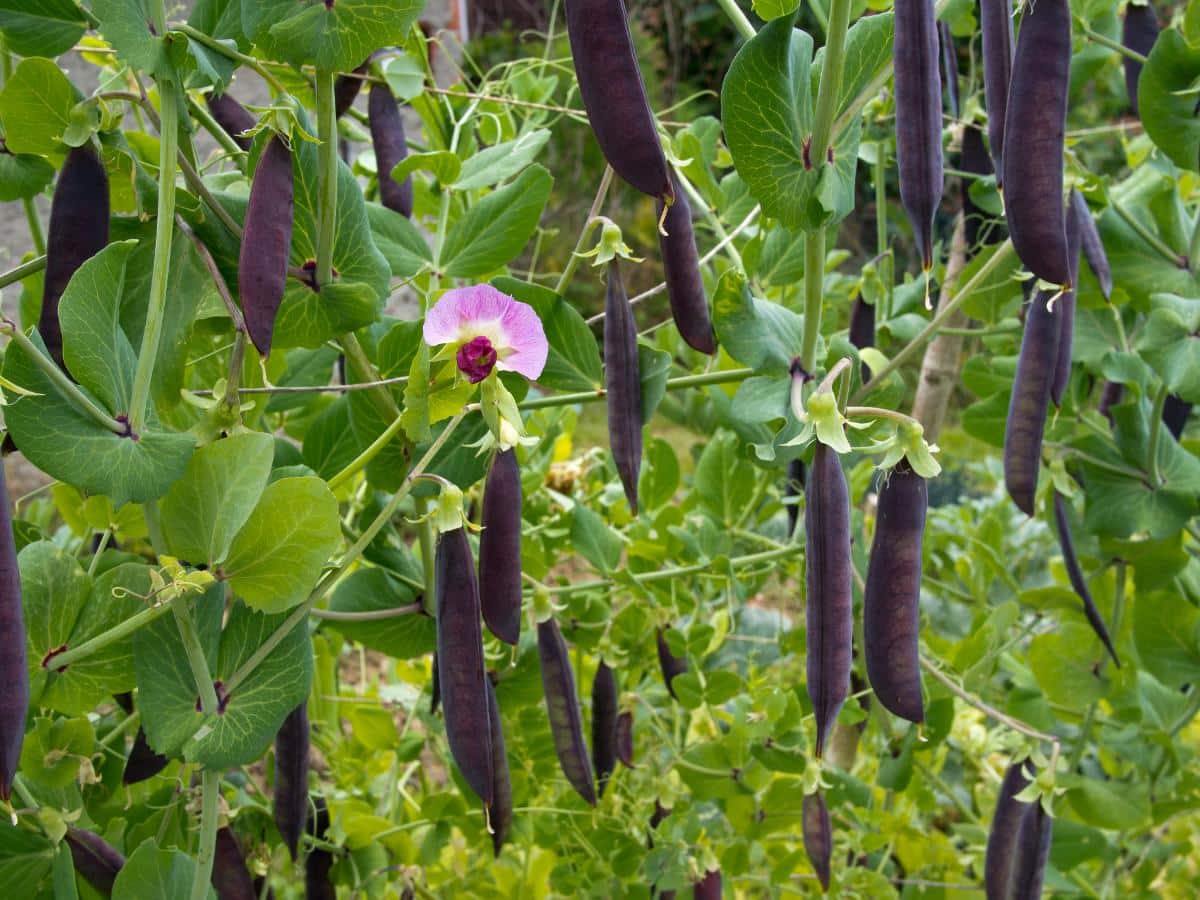
These offer texture (the bumpy, pebbly surfaces of kale leaves), color (burgundy lettuces, slate-blue cabbages), quick growth – and a nice supper.
Kale

This can be paired with ornamental coleus. Both plants get to be about the same height, and the grey-green kale leaves brings out the the oranges, burgundies, and yellows of the coleus.
Smaller, curly-edged kale provides excellent texture.
Ornamental kale is also a good plant for late fall because it stays merry after frost strikes down all your summer annuals and even looks good after temperatures dip below freezing. Plant the kale among lettuces for a real show.
Red Orach
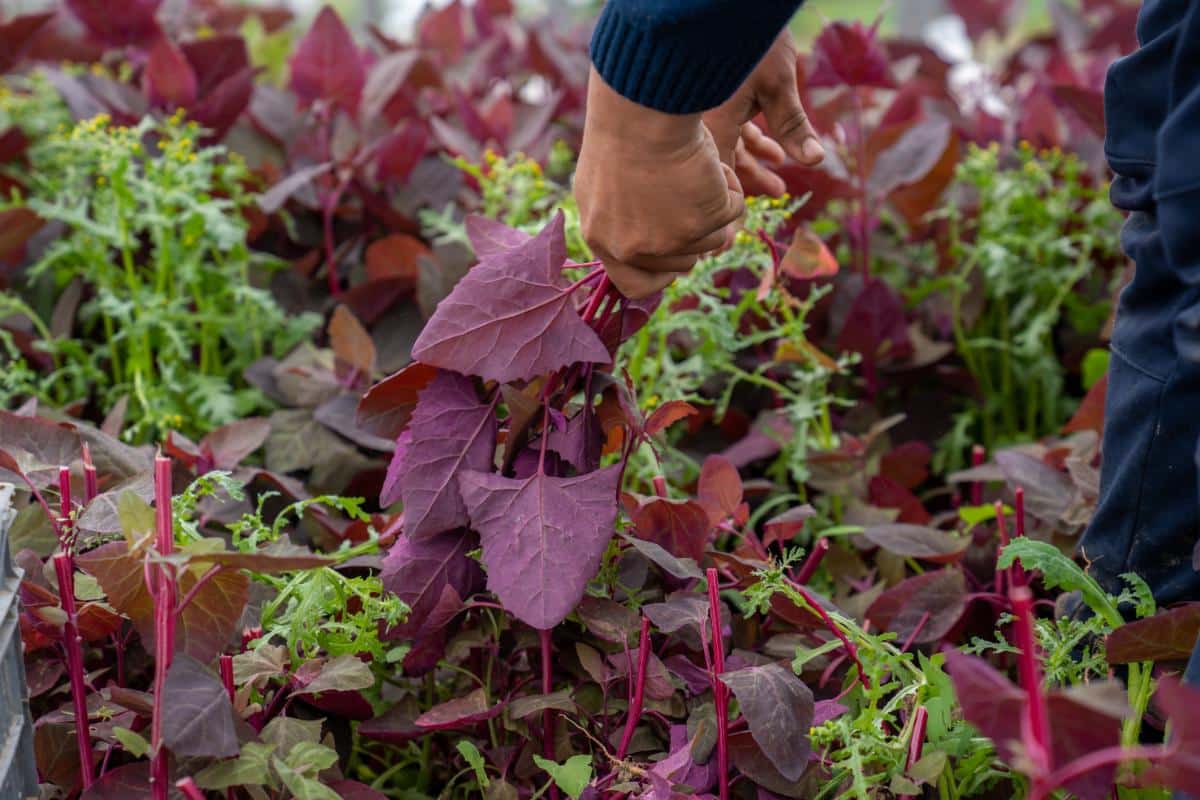
This plant, also called garden orach or French spinach, is also an amaranth. It’s grown mainly for its edible burgundy-red leaves, which look great among the green leaves of your garden. Not only do they provide a great exclamation point of color, but they are tasty, whether eaten raw in salads, steamed, or sautéed. They bear seeds like crazy (they are an amaranth after all) and they will self-seed and pop back up in your garden next year.

OR
Cabbages
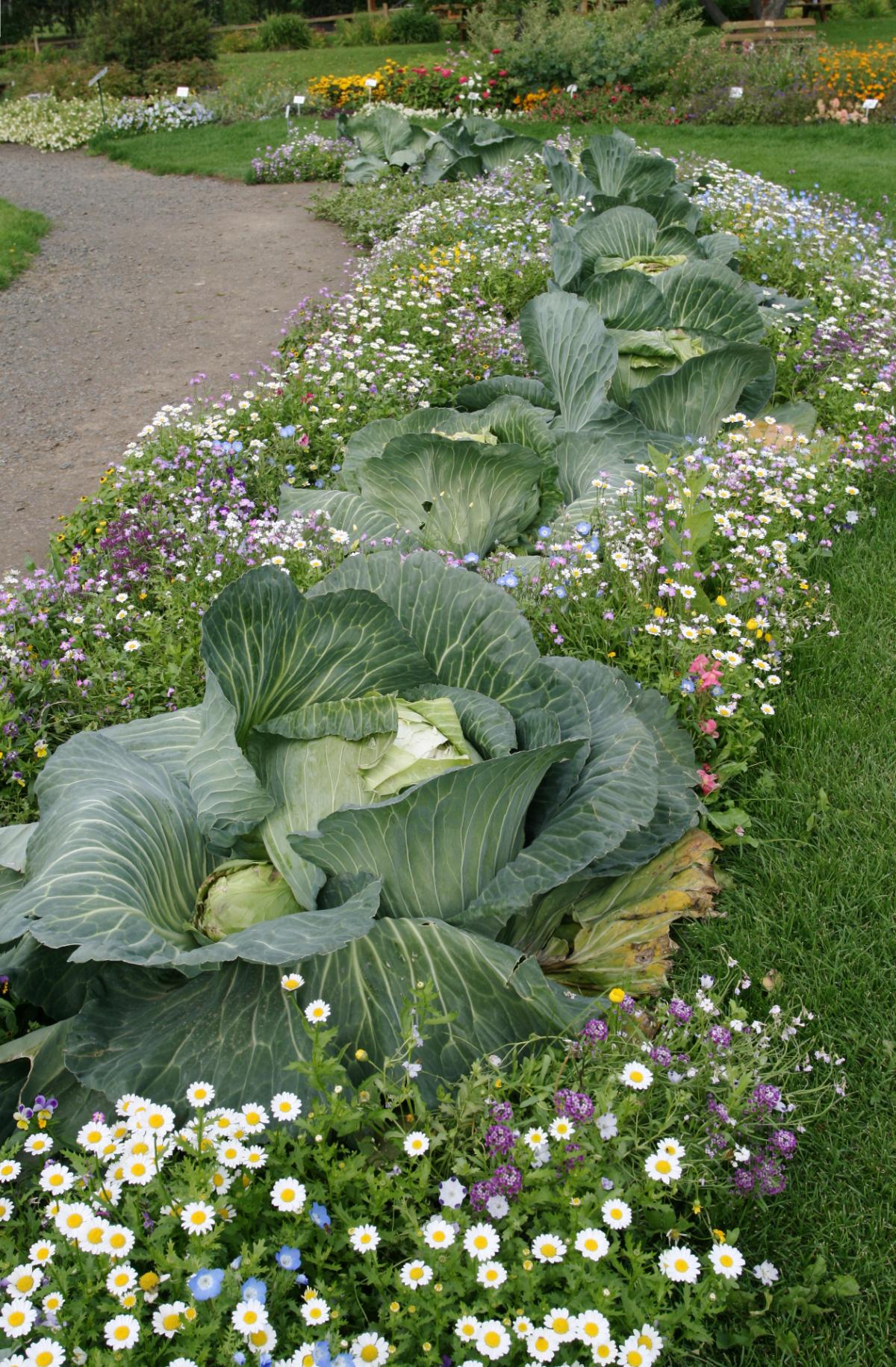
These are a good architectural choice for the landscape, providing coarse, large leaves and large, round forms in the garden. Cabbages are available in deep reds, sea greens, and smoky greens, and purple. They look good when paired with dusty miller, alyssum. Pair them with yellow flowers like calendula, or as a backdrop to a clump Swiss chard with colorful stems of yellow, red, and orange.
There are also monstrously huge cabbages like ‘Sapporo Giant’ that average 17 to 37 to 44 pounds per cabbage, but it has lovely dark green leaves and is a showstopper in the garden. Despite its large size, it is also bred for taste, winning gold medals in Japanese taste tests.
Swiss Chard
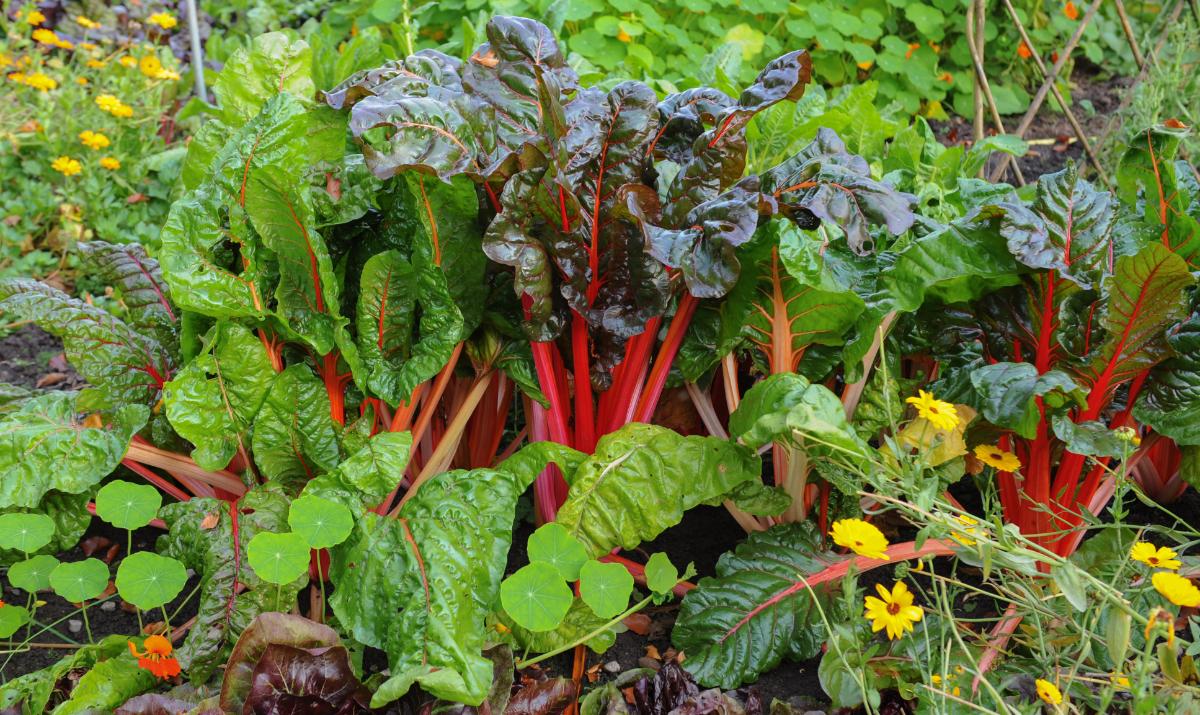
Chard is a type of beet that’s grown for its leaves and colorful stems instead of the roots. Swiss chard has bright yellow, orange, and red stems that look very attractive in the garden, and they can be used as a “cut and come again” crop.
If you want to get seeds from Swiss chard, remember that it is actually a biennial, not an annual. The first year it grows only leaves – not flowers or seeds. After it overwinters, it bears flowers that go to seed. Then it dies, its purpose fulfilled.
Learn more about 22 Ornamental Plants to Grow in an Edible Foodscape Garden
Lettuces
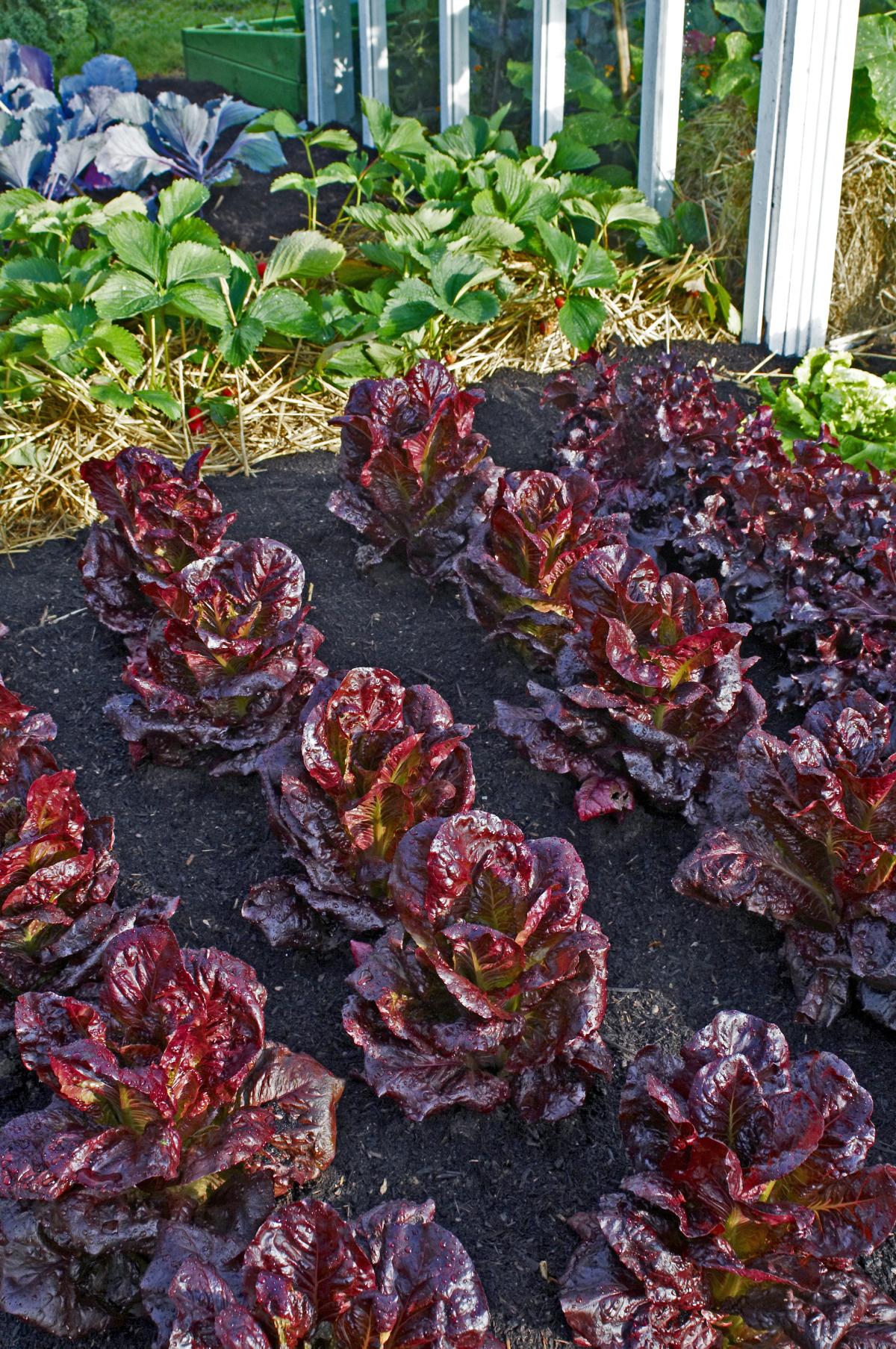
Heirloom lettuces really come through for the ornamental garden, with an incredible array of colors, shapes, forms – dark red leaf lettuce, speckled lettuces, tiny head lettuces, and endive with jagged edges. Use lettuces for edging garden beds in early spring. In August, you can sow lettuce seeds to fill in the gaps between spent plants to add color and give you a fall harvest.
Burgundy lettuces make a cute edging until they bolt. Leave a few to scatter seeds, so you have volunteer lettuces next year, then replace them with blooming annuals.
Other Leafy Vegetables
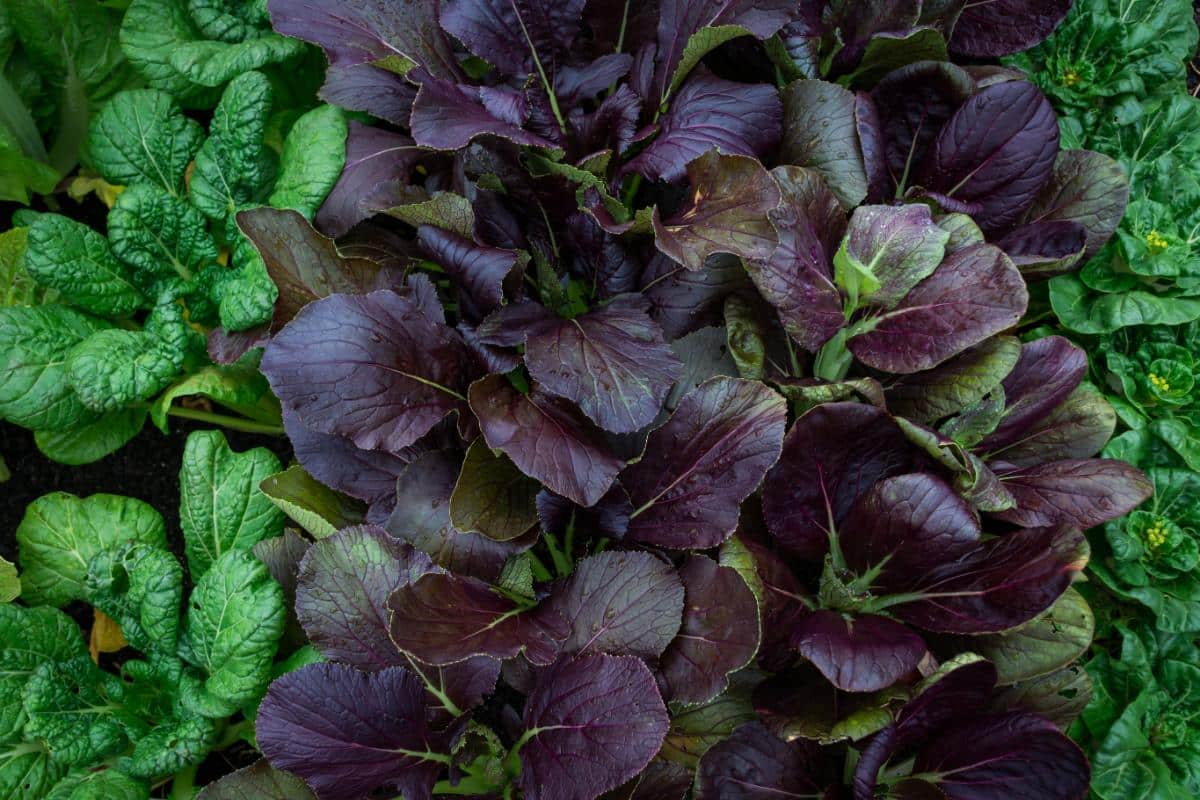
Red-veined sorrel makes a dependable, eye-catching spot of color in various places in the landscape. Choose Purple Lady Bok Choy for deep purple shades or Milk Bok Choy for bright white stems. Mizuna is a peppery mustard green with jagged leaves in green or purple and stems in white or pink. Dill makes a big, airy green cloud of tiny leaves.
Ornamental Grains
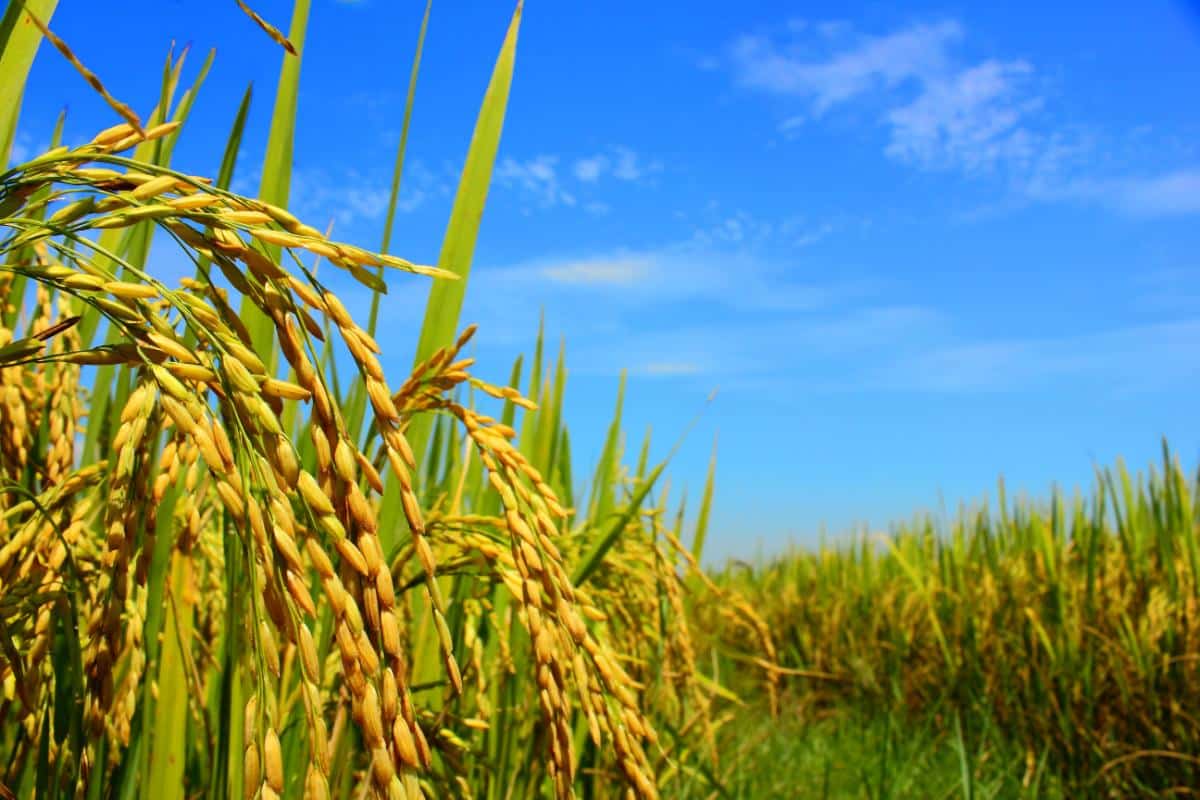
You don’t need to own a whole farm to raise a grain crop. If you plant a group of rice seeds together, you get a handsome clump of rice that resembles fountain grass. Carolina Gold and Black Madras are good ornamental rice varieties. Barley, wheat, and oats also make good-looking ornamental grasses and look good in cut-flower arrangements. Brie Arthur, who wrote about edible landscaping, grew grains along her street mingled with poppies and annual larkspur, and the whole arrangement looked very handsome.
Amaranth

These heirlooms, which were domesticated in ancient Central and South America, have really come up in the world, and deservedly so. These plants are related to lambs, quarters, and pigweed (both of which also have edible leaves), but amaranth can really shine in the garden. These back-of-the-border beauties feature long, rope-like flowers of red, golden orange, yellow, or light green, and they look like some Dr. Seuss creations.
Amaranths produce great quantities of grain that is rich in protein, gluten-free, high in fiber, and is rich in vitamin A, B, E, and iron. Not only is the grain good, but the leaves are also edible. The young leaves taste fine when eaten raw, but older leaves are better cooked, like spinach.
Amaranth comes in so many colors and sizes. Several should fit well in your home garden!
Buckwheat
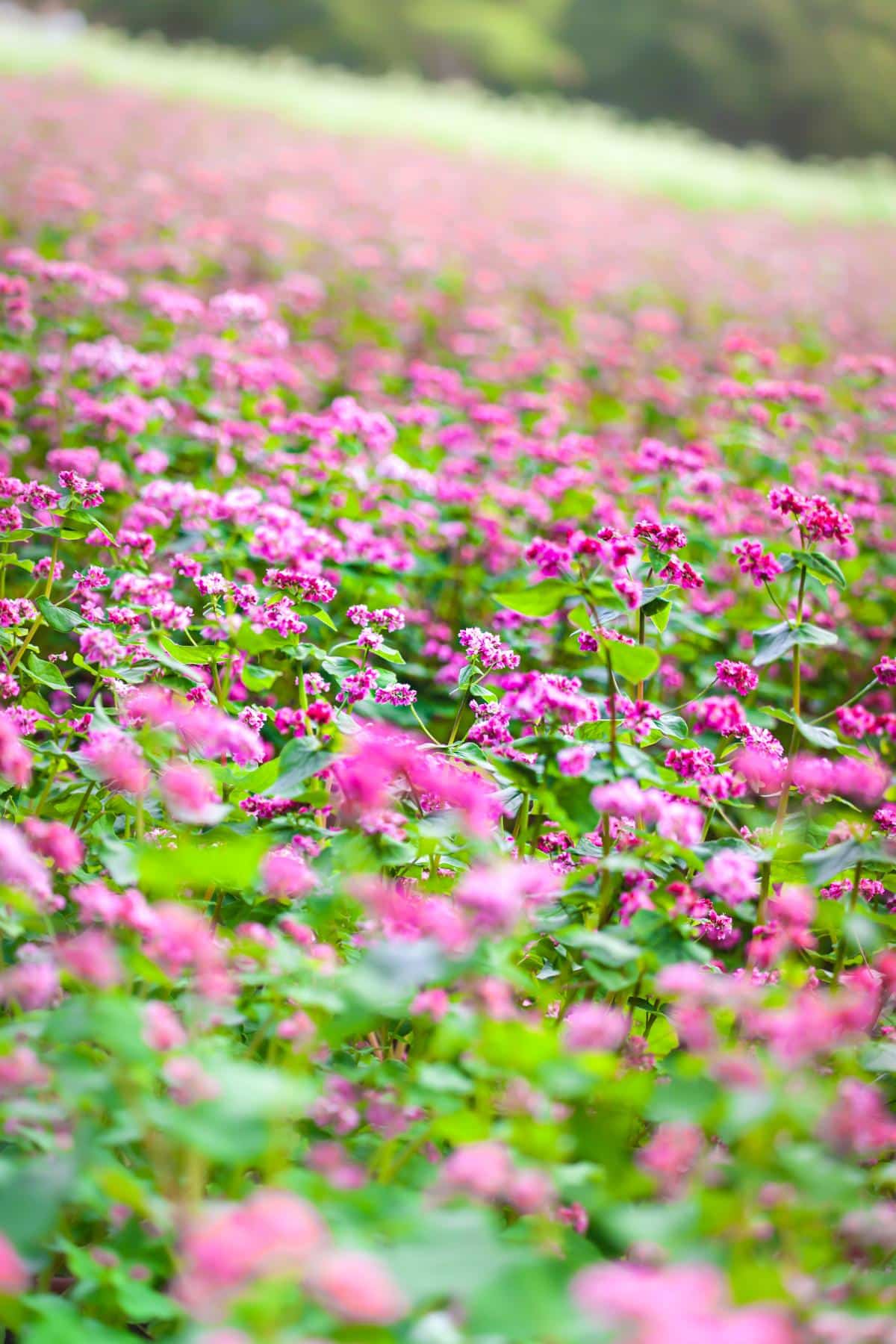
This grain is just a good all-around plant in the garden. It grows well on poor soils and is often recommended as a cover crop to improve poor soil. If you have a patch of weeds you need to subdue; buckwheat will smother for you while making more phosphorous available to other plants in the soil.
Buckwheat flowers very prettily, making your pollinators very, very happy, and then reward you with a high-protein grain that you can use to make the best damn pancakes this side of the Mississippi.
Generally you’ll get white flowers on most buckwheat varieties, but you can also find red buckwheat with pink to ruby flowers. This plant grows to be about four feet tall.
Buckwheat does prefer cooler areas – during extremely hot weather, the flowers will fall off without bearing seed – but they revive when the heat dies off.
Ornamental Vegetables and Fruits
Perennial vegetables and fruits, along with garden-variety vegetables, can leave their mark on the landscape as well.
Read more: 23 Best Perennials for an Edible Garden
Peppers
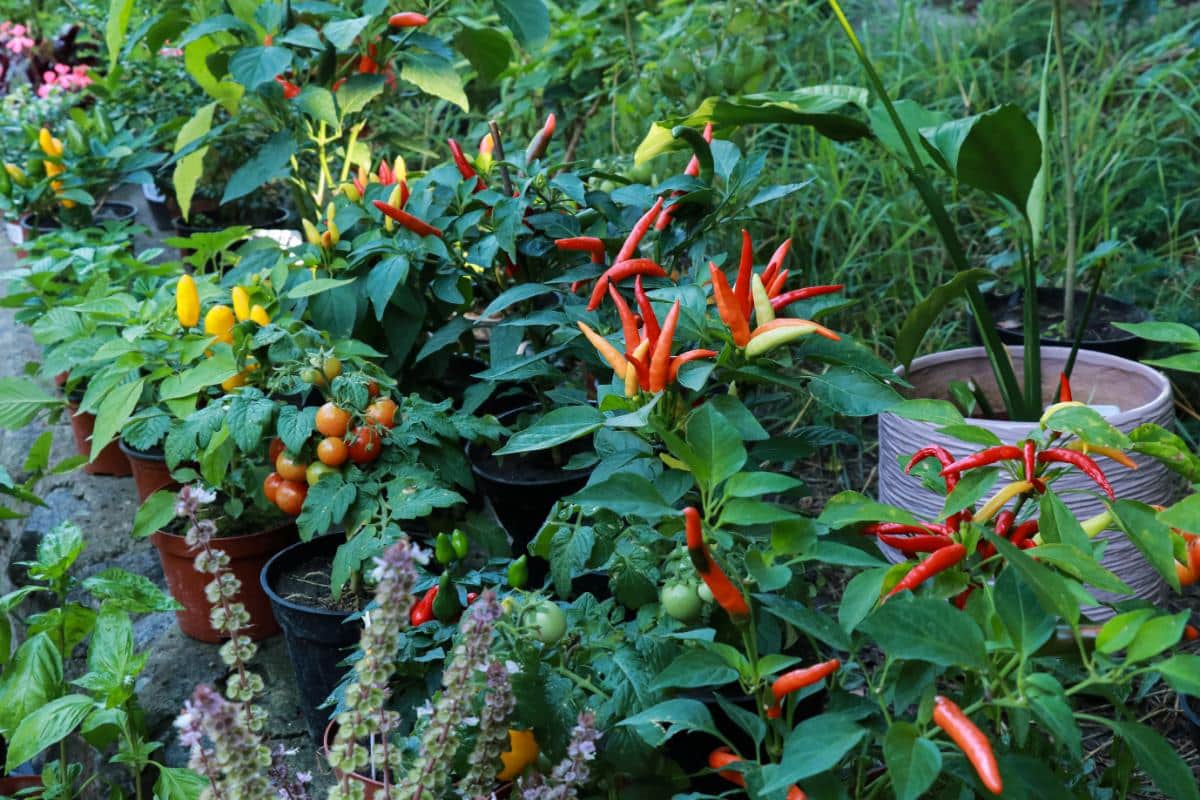
Ornamental peppers are all the rage in landscapes, and deservedly so. Of course, you get color from all those peppers (which you can then snack on as they ripen). But peppers are also heat-tolerant and drought-tolerant, and they’re fairly easy to grow and don’t need a lot of fuss.
Peppers are available in so many different colors – red, orange, yellow, brown, green, purple, and black. Many, like Chinese Five-Color, bear many different-colored peppers all at the same time, in oranges, cream, purple, yellow, and red.
Be sure you know how much heat the peppers pack before you plant them. If you don’t handle extremely spicy-hot foods, for goodness’ sake don’t plant a Carolina Reaper or any ghost chilli peppers in your garden! Even their foliage can burn you!
Rhubarb
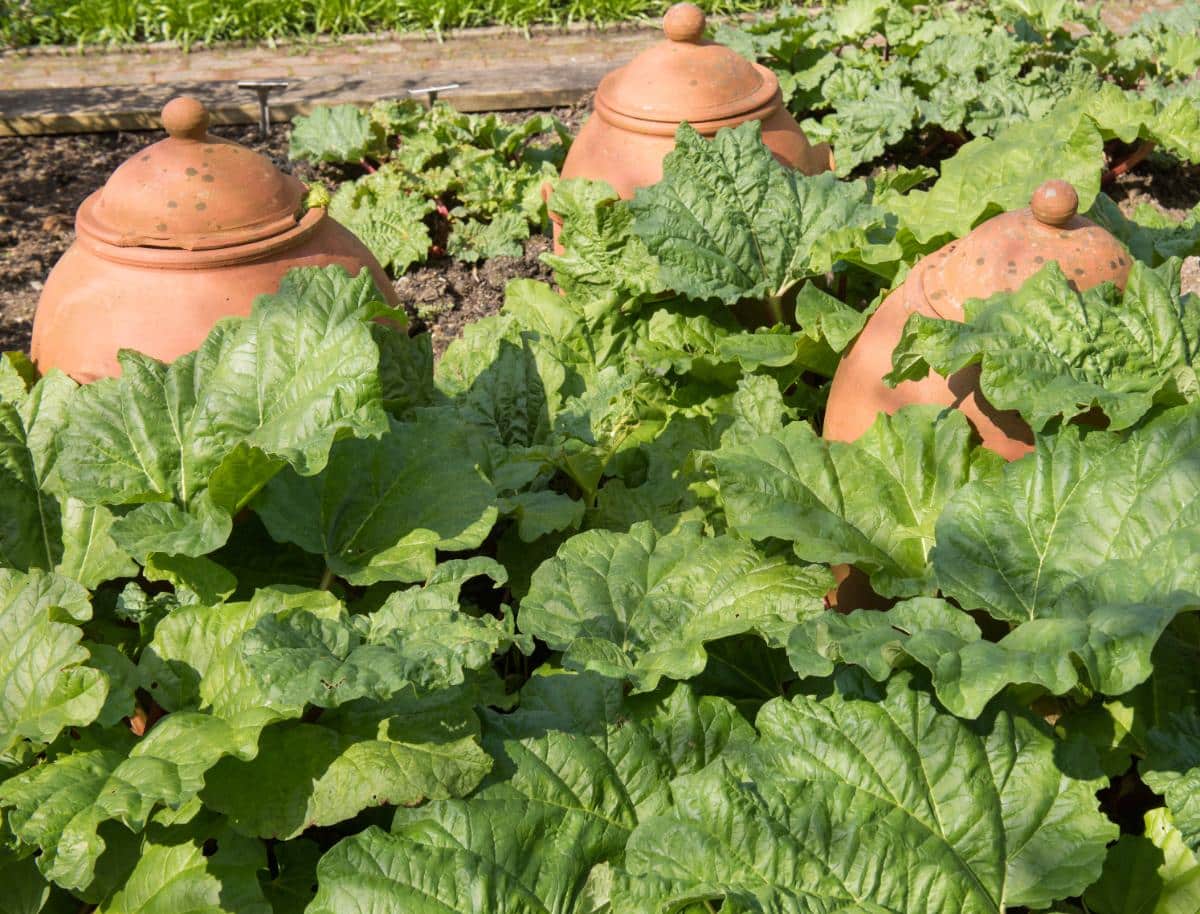
This is the ultimate “plant it and forget it” plant, with large, dark-green or silvery leaves that grows about two feet tall or four across – though it’s possible to grow a rhubarb that is close to four feet tall. The large leaves can give the elephant’s ear plants a run for their money, and they also have bright red stems that brighten up their corner of the garden. They will get large, so give them two or three feet of space.
Strawberries
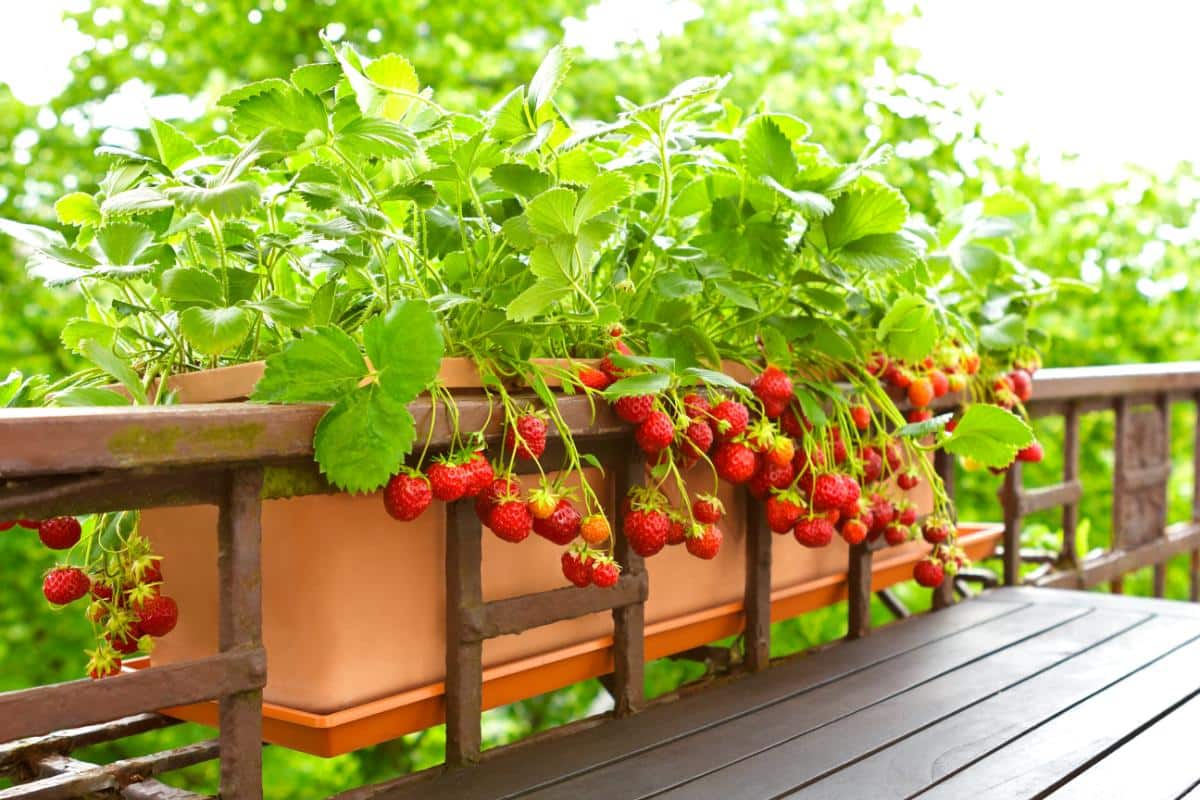
Alpine strawberries are a good choice for the edible garden. They’re small plants with pink blossoms instead of white, that grow in clumps and don’t send out runners the way regular strawberries do. They bear small, flavorful red or cream-colored strawberries. Alpine strawberries can be grown as a ground cover – they need more water and fertilizer, but otherwise don’t need a lot of work, and they’re tasty.
Fragaria x ananassa ‘Seascape’ is a day-neutral strawberry, blooming from late spring until frost. (“Day-neutral” means that it keeps growing and bearing, regardless of day length.)
Plant strawberries at the edges of a raised bed so the ripe berries can hang down over the sides.
Tomatoes
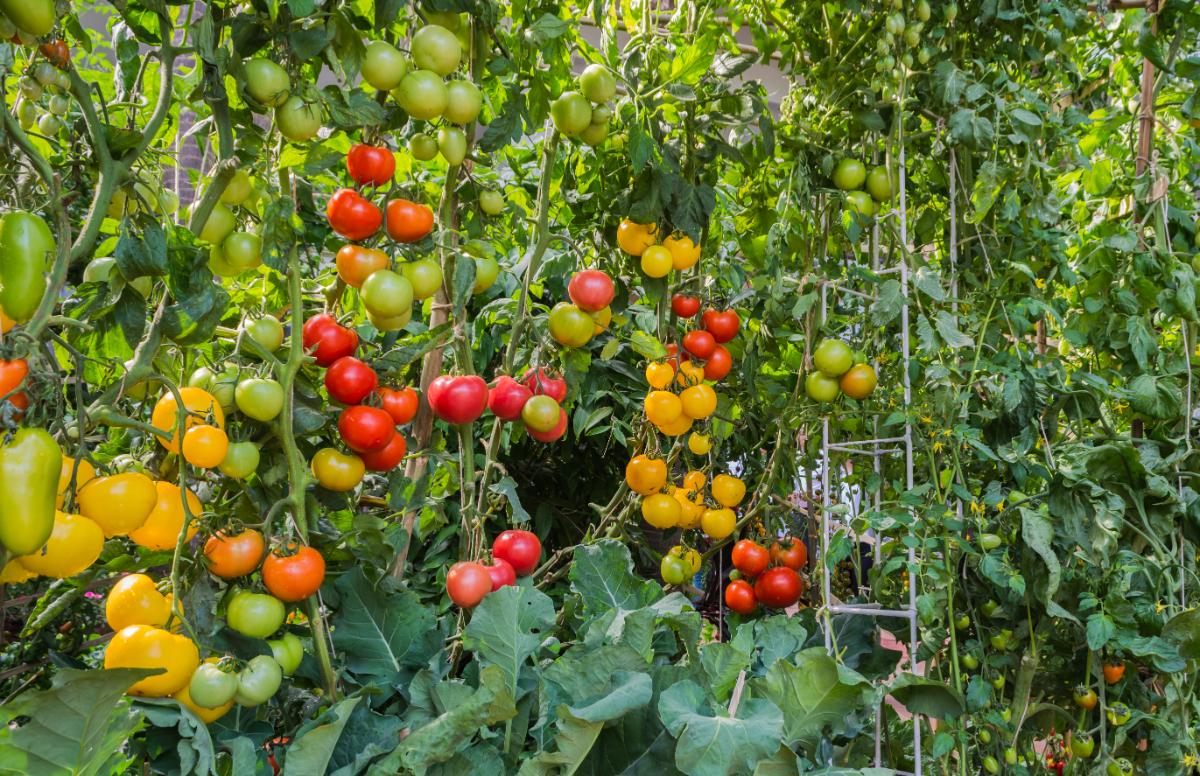
The best tomatoes in edible landscapes are dwarf or determinate varieties. Indeterminate varieties keep growing up and out. An indeterminate tomato will take over your garden and let itself into the house and drink all the root beer in the fridge. However, indeterminate tomatoes also bear fruit as long as they keep growing.
A determinate tomato grows only a couple of feet tall, then stops growing and bears fruit. It’s a better choice if you want compact, bushlike plants. However, they bear one heavy flush of tomatoes and look pretty, but after that, they’re done with fruits.
‘Orange Hat Micro’ tomato is a tiny, extra-dwarf bush plant. It stays less than a foot tall and keeps popping out little fruits that move from green to yellow to orange.
‘Tiny Tim’ and ‘Veranda Red’ are slightly larger small bush tomatoes, topping out at about a foot tall, that bear lots of little red tomatoes.
‘Sungold F1’ is one of my favorites. It will sprawl (because it is an indeterminate tomato), but if you keep it within bounds, it can still look good. Sungolds produce tons of cherry tomatoes in a bright orange-yellow, and they are sweet and tasty, especially when they’ve been growing in the sun.
This Doesn’t Even Scratch the Surface!
This article is just an overview – we haven’t even touched on herbs, shrubs, or trees, and there are a bunch more great edible landscape plants that absolutely kill it in the ornamental border. But this should be a good start. Get out there and get some vegetable seeds in the ground!
More Edible Garden:

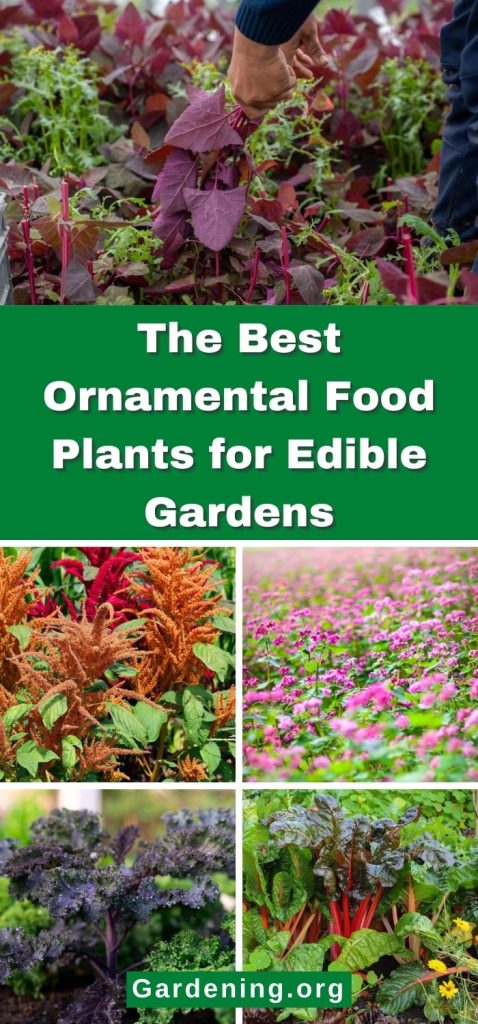
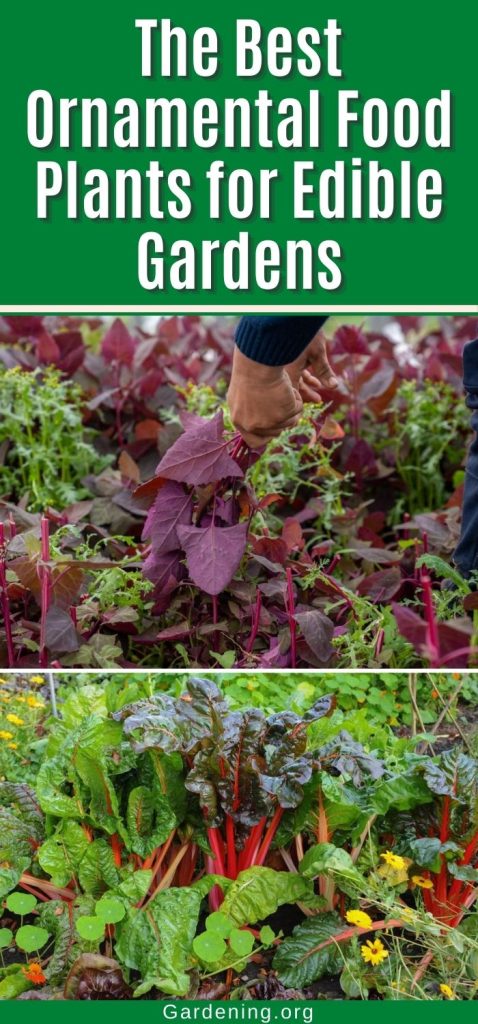
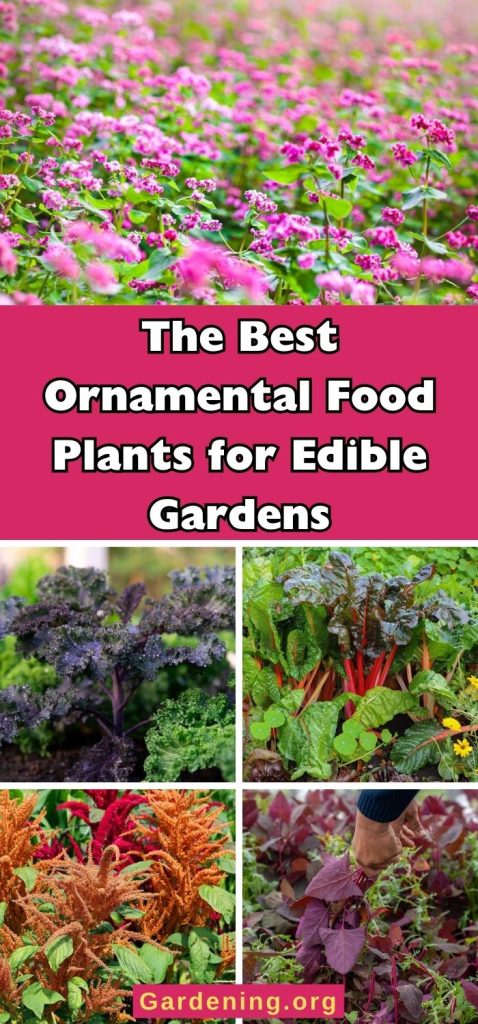
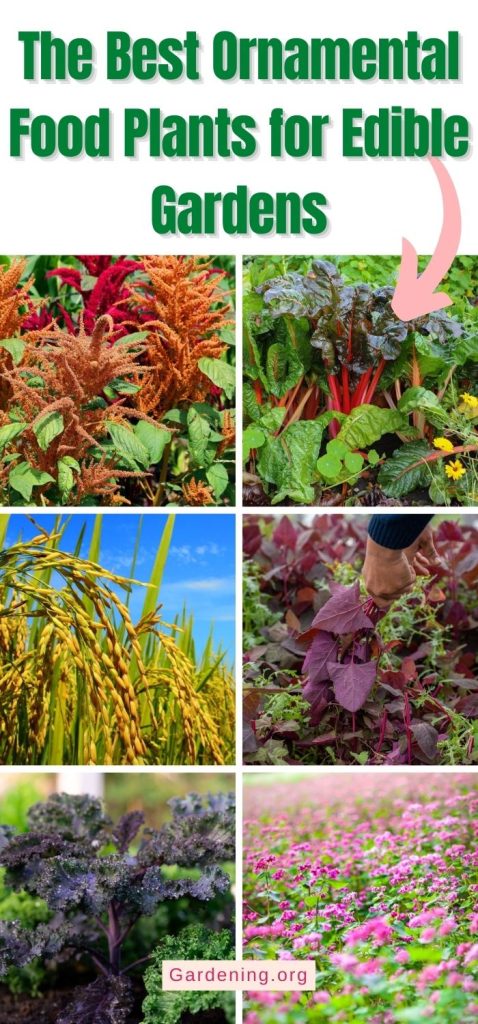
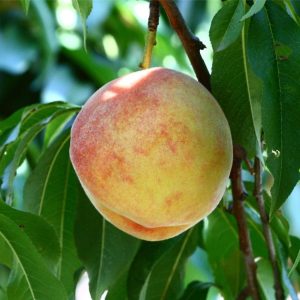
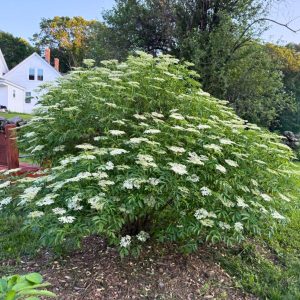
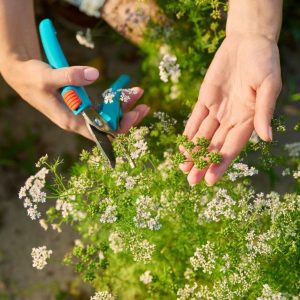
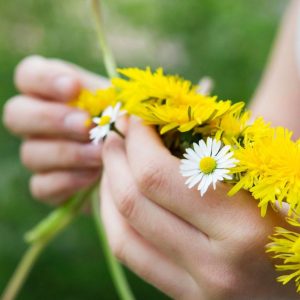
Leave a Reply